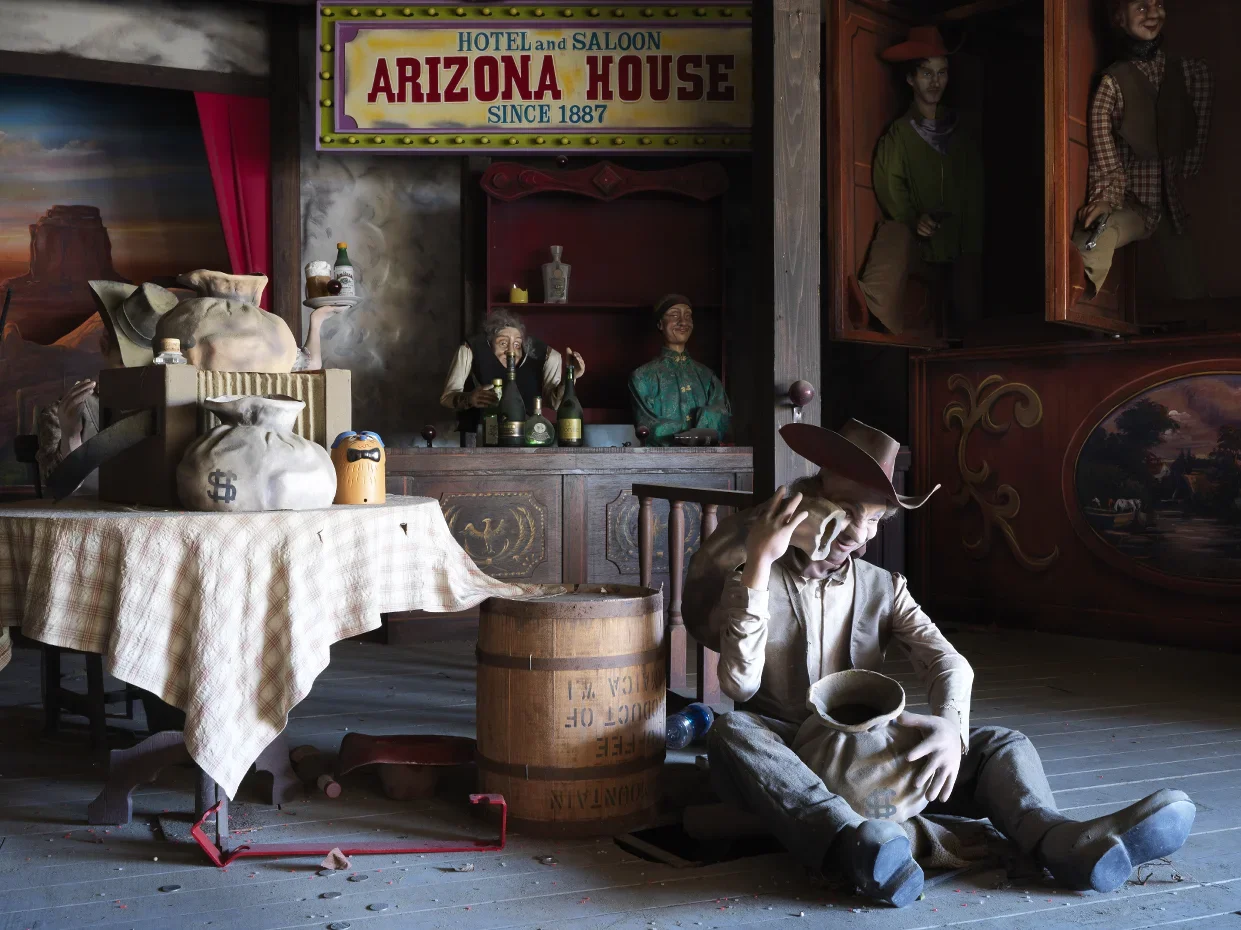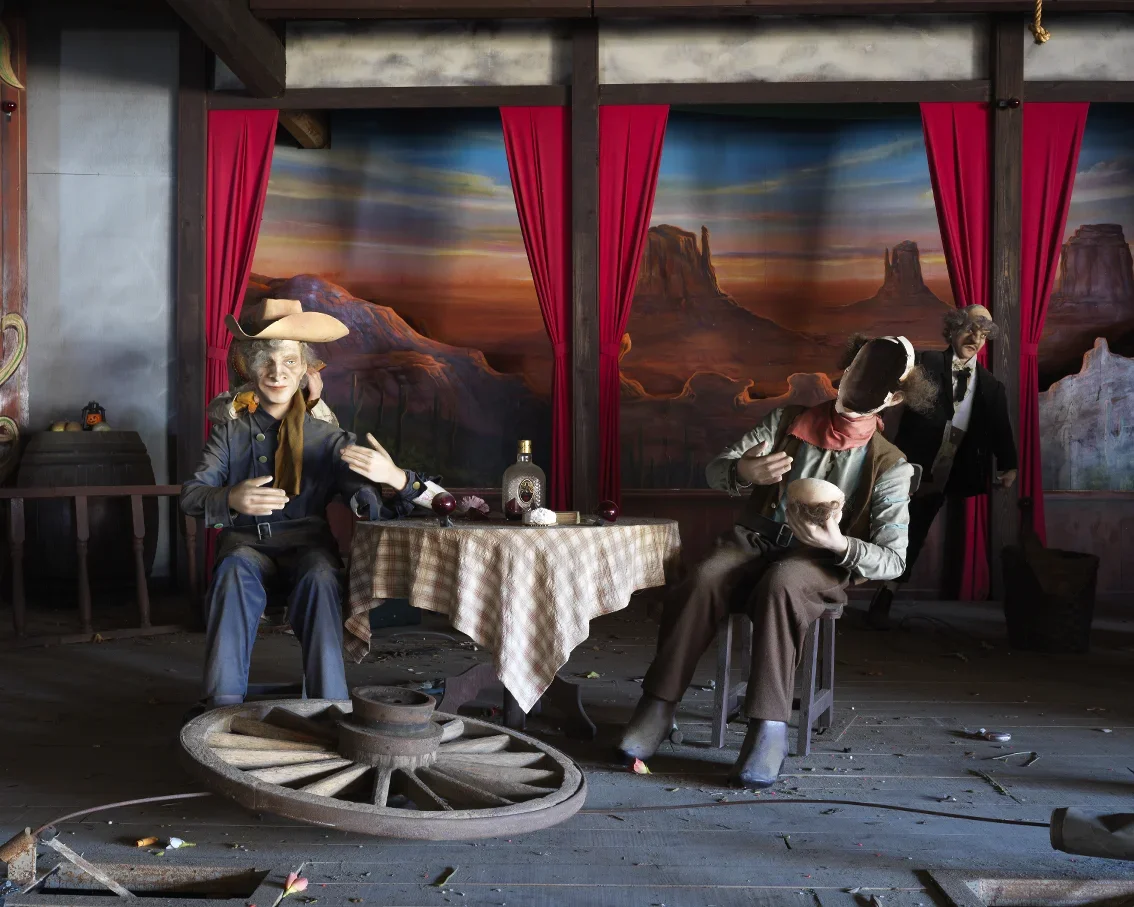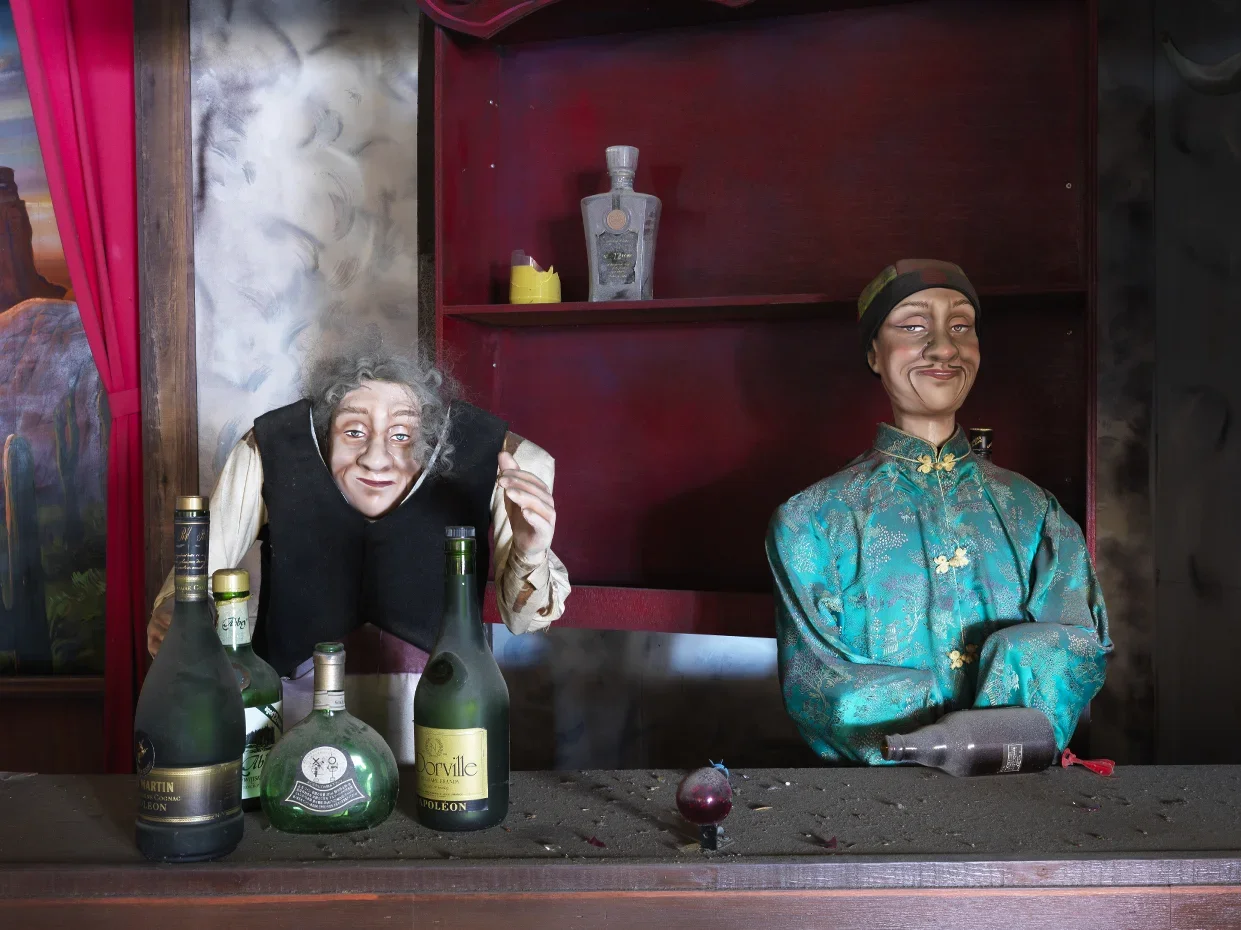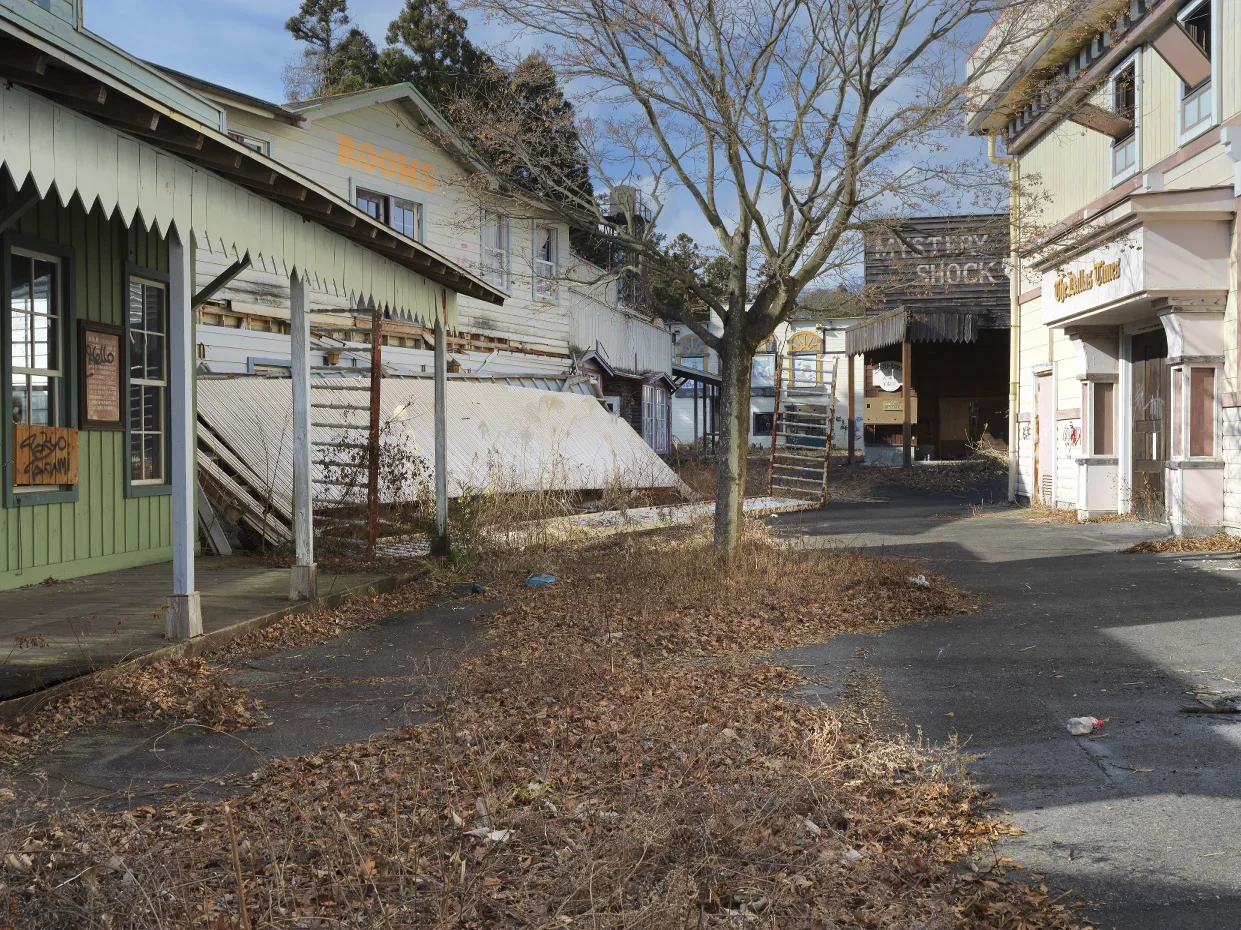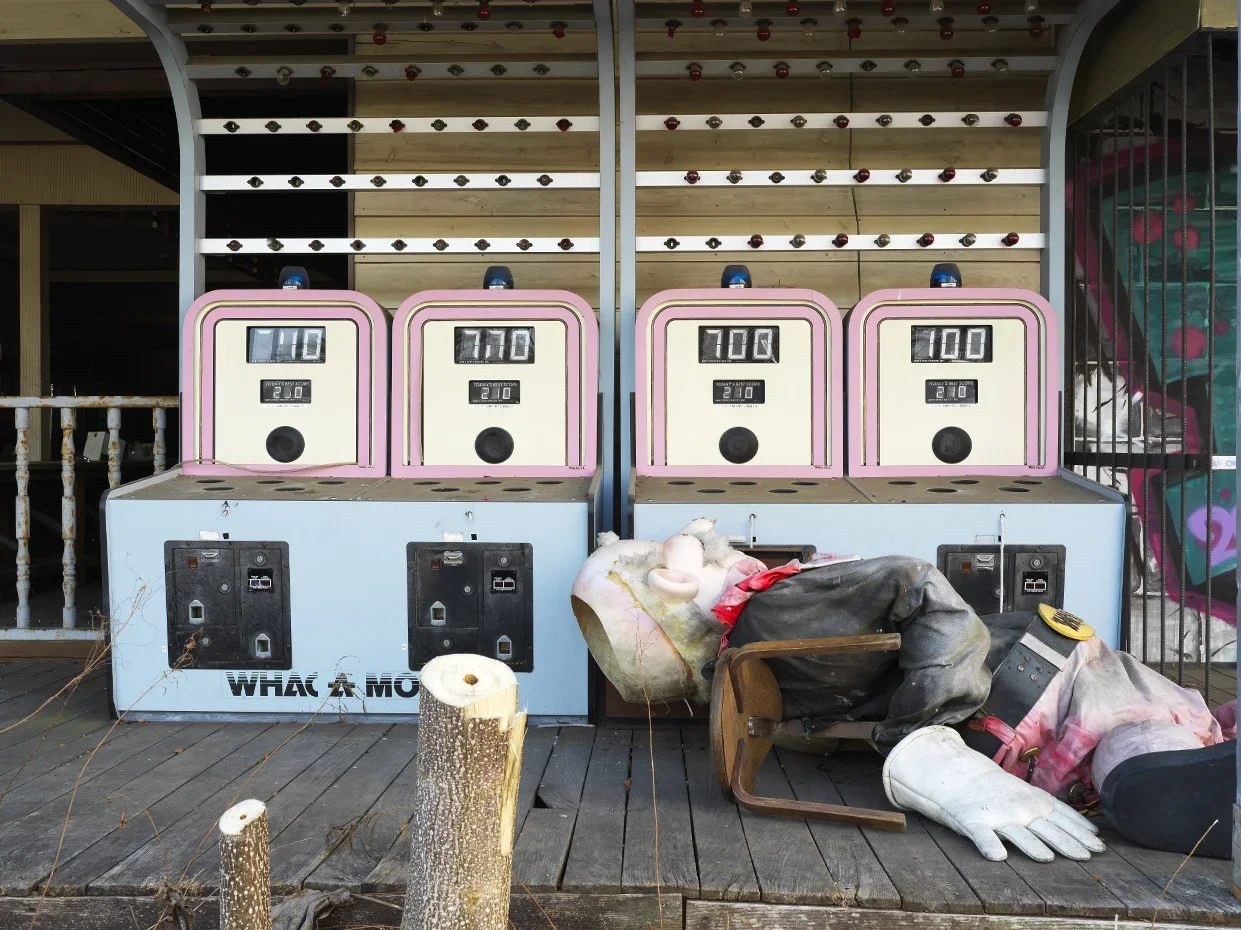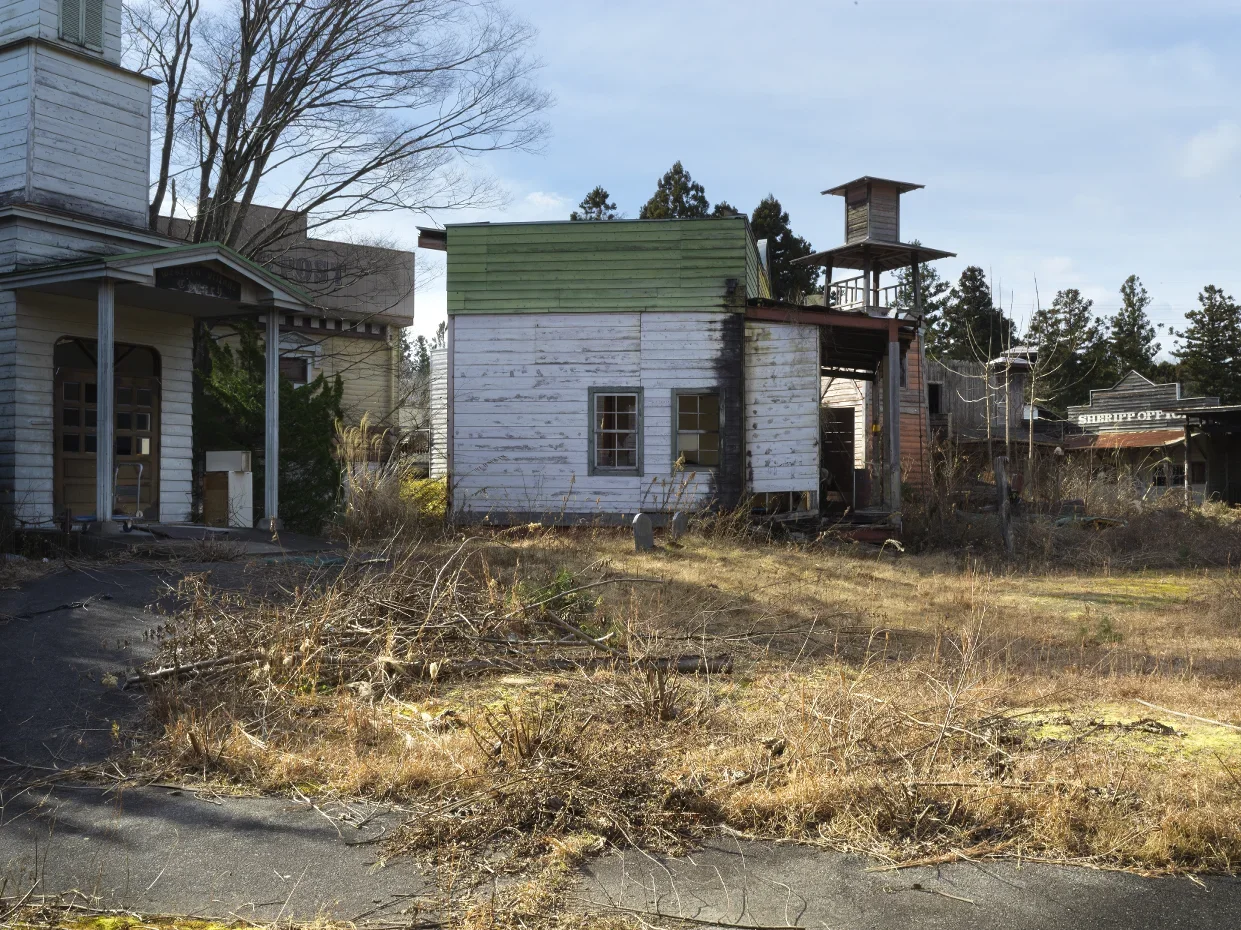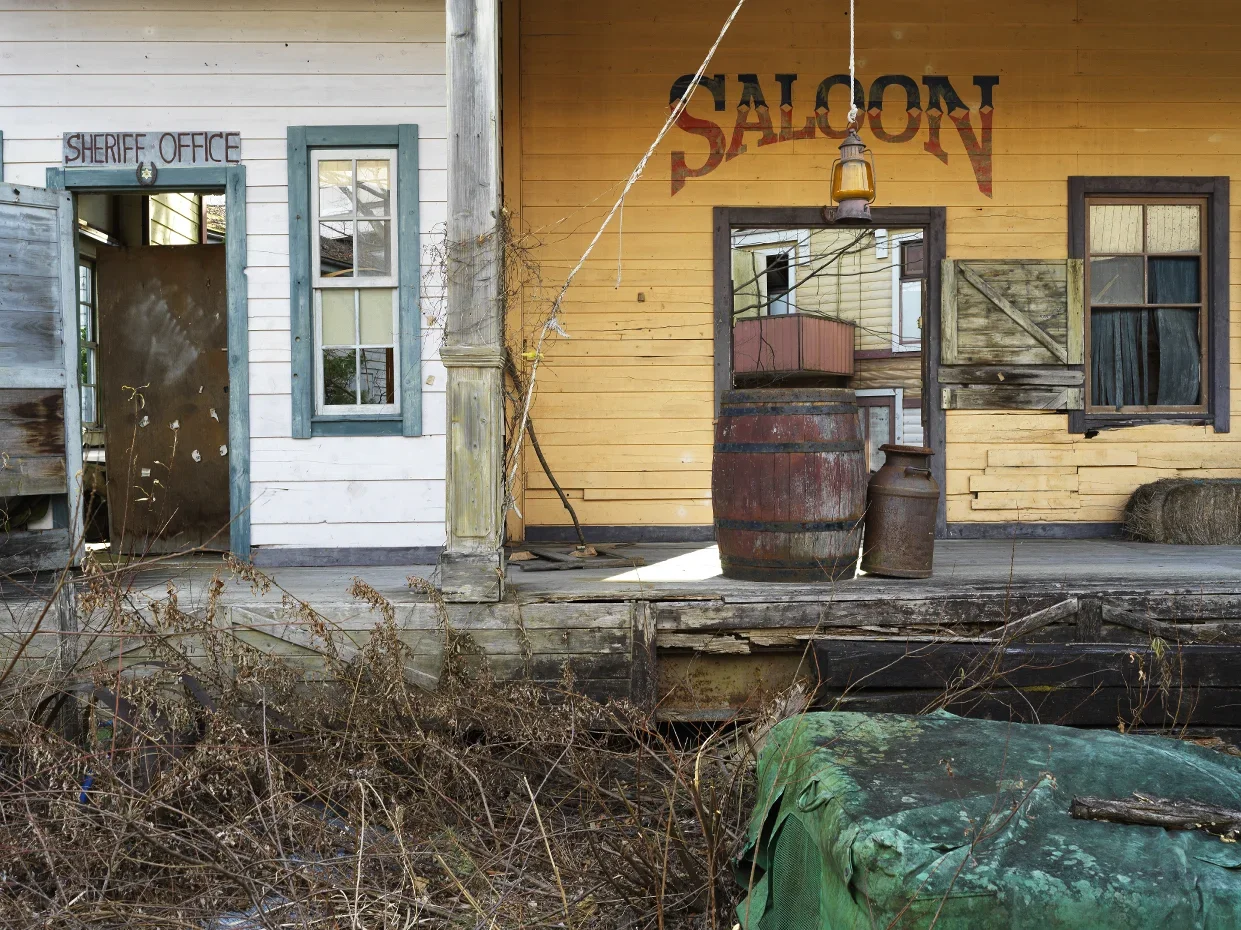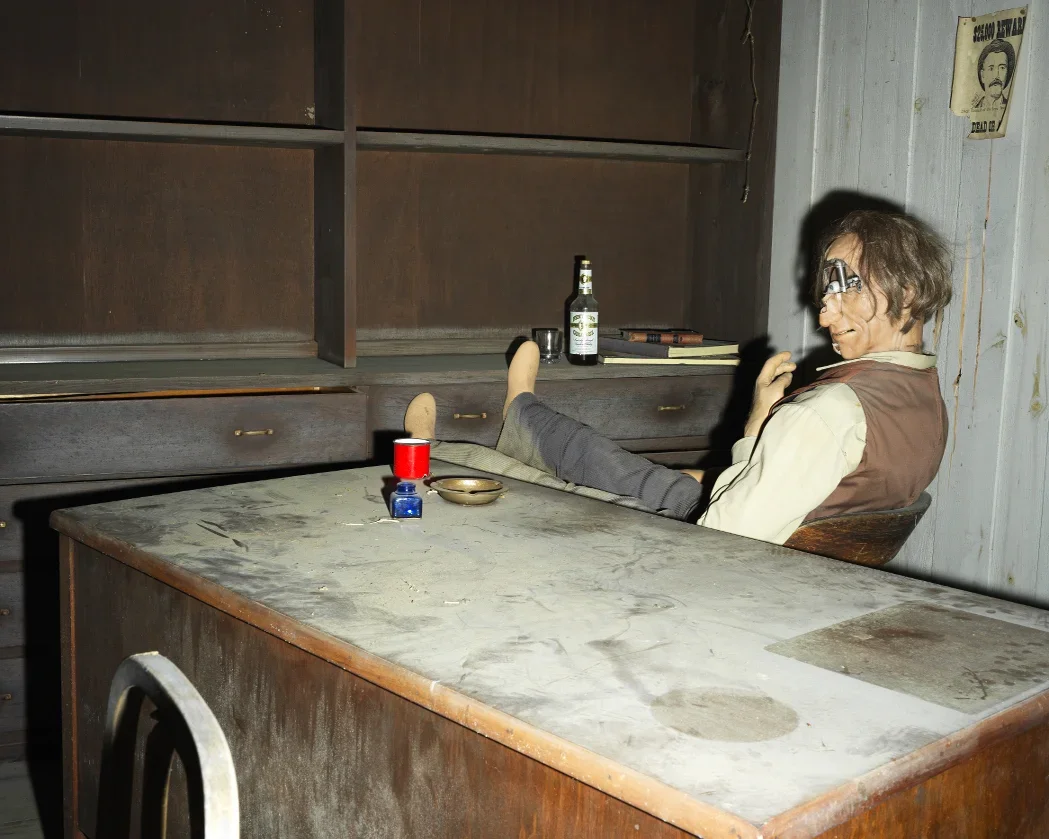During my first trips to Japan, I stumbled upon an abandoned place that instantly reminded me of Westworld (1973) — the original one, with Yul Brynner as the villain. And what a villain he was — an unstoppable machine, like the T-800 or the T-1000, but eleven years earlier.
My first visit to that abandoned park, filled with robots, shattered plastics, exposed circuits, and a haunting silence, was one of the most intense exploration experiences I’ve ever had. I had such a strong urge to rescue one of those robots and bring it back to life. One of them was the Sheriff. I found him near a caravan — someone had stripped off his clothes, leaving his transparent plastic body exposed, revealing all his inner circuits.
I went back years later, and then again. Each time, it looked worse — thanks to all the Western You Tubers who went there for Halloween, flipping everything upside down, filming goofy skits with the robots, undressing them, breaking them, making them smoke — all kinds of nonsense that could’ve easily been avoided. The last time I went, they had already started dismantling the place, probably to clear and sanitize the area. Such a shame. Western Village, tucked away near Nikkō, was once a full-scale Wild West theme park — a surreal slice of America deep in Japan.
It opened in 1975, when Enichi Ominami decided to turn his family ranch into a living, breathing frontier town. This wasn’t just a facade of saloon fronts and cardboard cowboys; it was a proper town, complete with dusty streets, arcades, bars, and life-sized buildings you could actually walk through.
The park was famous for its animatronic robots and elaborate set pieces — from staged cowboy shootouts to a robotic Abraham Lincoln who’d greet visitors with an eerie, slow-motion charm. For a while, it thrived as one of Japan’s most unique and eccentric attractions.But by the early 2000s, Western Village’s glory days had faded. Bigger, flashier parks like Tokyo Disneyland drew the crowds away, and the cost of maintaining hundreds of aging robots and mechanical shows became unsustainable. Attendance plummeted, repairs piled up, and in 2007, the park finally closed its doors for good.

